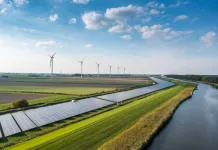The close of 2023 marks an important reflection point on the strides made since the introduction of the Inflation Reduction Act (IRA). Behind the scenes, extensive groundwork is being laid to launch building-related initiatives that promise substantial, enduring benefits, particularly for those in greatest need. With a collective international commitment to accelerate energy efficiency by 2030, the stakes for successful IRA execution have never been higher.
Tax Credits Transform Home and Business Upgrades
Already, homeowners and businesses can take advantage of enhanced tax incentives on energy-efficient and decarbonization upgrades, effective from January 1, 2023. In contrast to instant rebates, these tax credits provide financial returns upon filing federal taxes. Critically, there are no lifetime or aggregate government-provided incentive caps, and credits extend through 2032.
Qualifying upgrades for more sustainable living spaces cover a gamut of equipment, subject to specific energy efficiency criteria:
- Innovative heat pumps and geothermal heating and cooling solutions
- Next-generation heat pump water heaters
- Advanced central air conditioners
- Eco-friendly biomass stoves and boilers
- Comprehensive home energy audits
- Effective air sealing and insulation methods
Moreover, builders can receive tax credits for new constructions that meet the latest ENERGY STAR requirements. Throughout the year, the Department of Treasury has refined its guidance, simplifying these tax credit processes to maximize adoption and consumer awareness.
Unlocking Homeowner Rebates
Although not yet released, homeowners will soon gain access to substantial rebates that dramatically reduce the cost of making their homes more energy-efficient and electrified. The Department of Energy (DOE) is meticulously designing this rebate program, with a heavy emphasis on supporting low- and moderate-income homeowners. Nearly $9 billion allocated for these rebates will be managed through state energy offices, with NRDC actively aiding in the development and prioritization of these funds, especially in underserved communities.
The Greenhouse Gas Reduction Fund’s Novel Approach
The EPA‘s Greenhouse Gas Reduction Fund (GGRF), a pioneering $27 billion initiative, targets the expedited delivery of clean energy projects, especially within neglected regions of the clean energy movement. The Fund is set to empower nonprofit lenders, states, municipal governments, and Tribal Governments with projects geared towards slashing greenhouse gas emissions and pollution. Boasting tremendous potential, nearly 70% of these funds are earmarked for disadvantaged communities, laying the groundwork for substantial capital mobilization—both crucial for achieving our net zero 2050 goal in a fair manner.
Strengthening Energy Codes
Significant funding is pouring into jurisdictions to enhance the energy codes regulating new buildings. The initial $90 million from the Infrastructure Investment and Jobs Act has been awarded to promote more efficient, decarbonized new constructions. In parallel, the DOE is calling for the first $400 million in technical assistance funds from the IRA to aid jurisdictions in adopting current or superior energy codes. These funds are anticipated to begin bearing fruit in 2024.
Climate Pollution Reduction Grants Forge New Pathways
The Environmental Protection Agency’s Climate Pollution Reduction Grants aim to equip states and major metropolitan areas with the means to devise comprehensive, community-driven climate change strategies. With approved plans, jurisdictions unlock the opportunity to compete for a share of EPA’s $4.3 billion fund, potentially nabbing grants well above $100 million. A program already prompting states to establish novel climate targets, it’s an initiative that signals major climate investment priorities in the looming future.
Targeted Improvements in Affordable Housing
Under the IRA is the Green and Resilient Retrofit Program (GRRP), spearheaded by the Department of Housing and Urban Development (HUD). Focusing on affordable housing, HUD aids eligible properties with grants and loans for upgrades across energy efficiency, emission reduction, and climate resilience. Over the past year, NRDC has hosted numerous briefings, offering education and resources and fostering connections with HUD officials to maximize program impact.
The IRA’s implementation commenced robustly in 2023 and gears up for a significant acceleration in 2024. NRDC remains steadfast in its mission to ensure IRA efforts unfold with maximum effectiveness and equity.

























